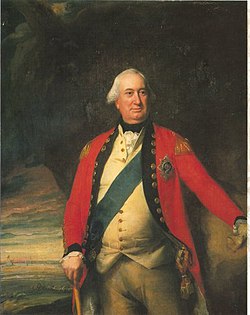Charles Cornwallis, 1st Marquess Cornwallis
Charles Cornwallis, 1st Marquess Cornwallis KG, PC (31 December 1738 – 5 October 1805), styled Viscount Brome between 1753 and 1762 and known as The Earl Cornwallis between 1762 and 1792, was a British Army officer and colonial administrator. In the United States and the United Kingdom he is best remembered as one of the leading British generals in the American War of Independence. His surrender in 1781 to a combined American and French force at the Siege of Yorktown ended significant hostilities in North America. He also served as a civil and military governor in Ireland and India; in both places he brought about significant changes, including the Act of Union in Ireland, and the Cornwallis Code and the Permanent Settlement in India.
Born into an aristocratic family and educated at Eton and Cambridge, Cornwallis joined the army in 1757, seeing action in the Seven Years' War. Upon his father's death in 1762 he became Earl Cornwallis and entered the House of Lords. From 1766 until 1805 he was Colonel of the 33rd Regiment of Foot. He next saw military action in 1776 in the American War of Independence. Active in the advance forces of many campaigns, in 1780 he inflicted an embarrassing defeat on the American army at the Battle of Camden. He also commanded British forces in the March 1781 Pyrrhic victory at Guilford Court House. Cornwallis surrendered his army at Yorktown in October 1781 after an extended campaign through the Southern states, marked by disagreements between him and his superior, General Sir Henry Clinton.
...
Wikipedia

